This post contains affiliate links for which I may make a small commission to help keep the site running. You will not be charged extra for these items had you not clicked the links. Thank you for your help to keep the site running!
Unlike in the United States, where camping is generally permitted on much of the public land such as national forests and wildlife management areas, Britain adopts a more regulated approach to wild or ‘free’ camping.
Just because it’s public land, it sadly doesn’t mean you can pitch a tent anywhere that’s flat with a great view.
The truth is, if you do, you may end up with an angry landowner kicking you out, or worse – the police being called on you in the night!
However knowing where to pitch a tent in Britain is fairly simple once you know where the designated places are, that by law, allow you to wild camp in Britain.
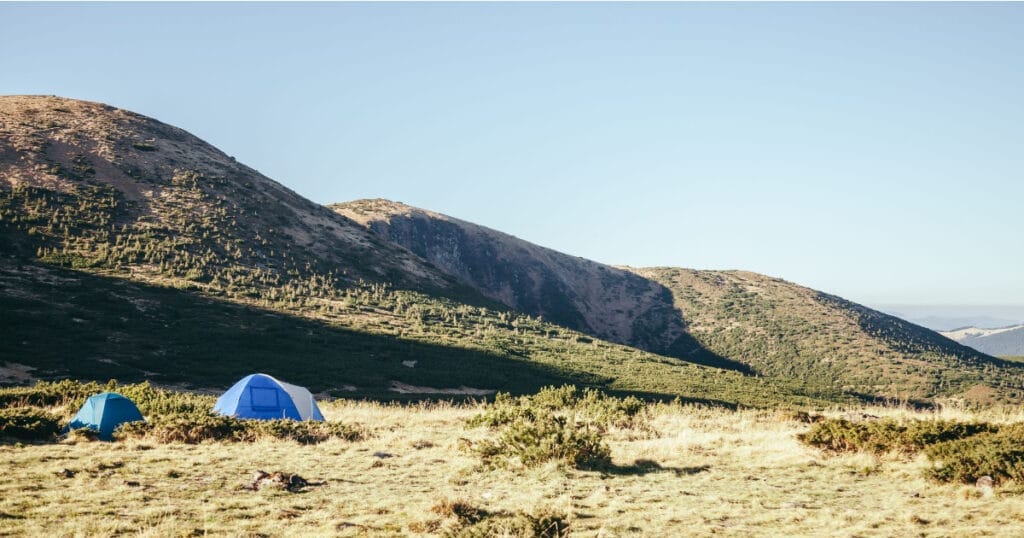
And once you do, you’ll be all set to enjoy some of the country’s most scenic and undisturbed landscapes.
So as a camping enthusiast, here’s my guide to wild camping in Britain, including the rules and some best practices so you can have a safe and comfortable wilderness camping experience.

What Actually is Wild Camping?
Wild camping (also known in the UK as free camping, backpack camping, wilderness camping or boondocking), is the practice of pitching a tent and sleeping in a remote or wilderness area, outside of designated campgrounds.
Common rural locations are mountains, forests, or open moorlands.
Unlike staying at a campsite where amenities like toilets, showers, and drinking water are typically available, wild camping is about being self-sufficient and immersing yourself in nature.
It requires campers to carry all their equipment and essentials with them.
And I might add, take everything away with them too.
It’s an awesome way to escape the hustle and bustle of everyday life and to enjoy the tranquility of remote rural areas, and really get to intimately know the outdoor culture of Britain.
Where can you Legally Wild Camp in Britain?
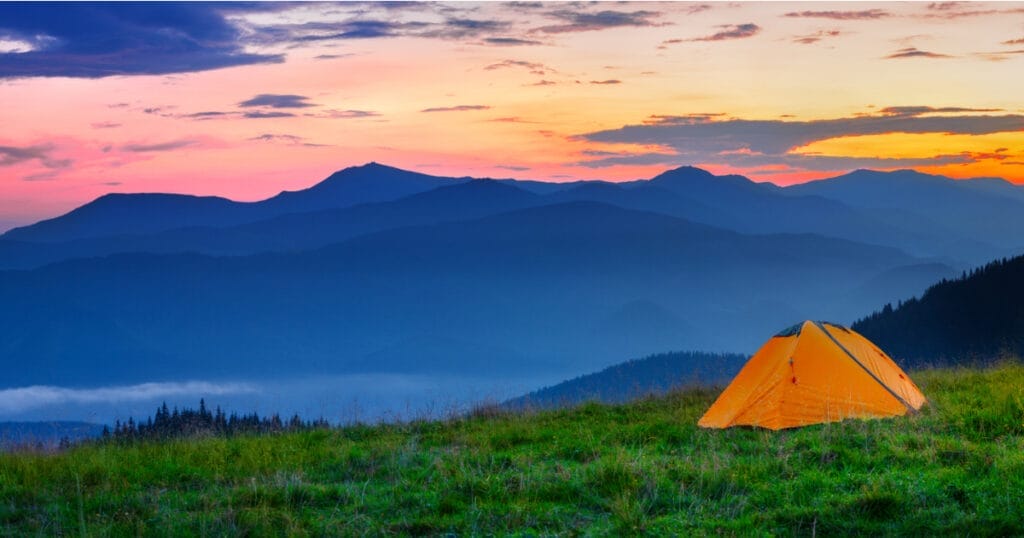
As mentioned, there are only a few places in Britain where you can wild camp.
The legalities vary between England, Wales, Scotland, and Northern Ireland, primarily due to differences in land access rights.
Here’s the low-down:
Wild Camping in Scotland
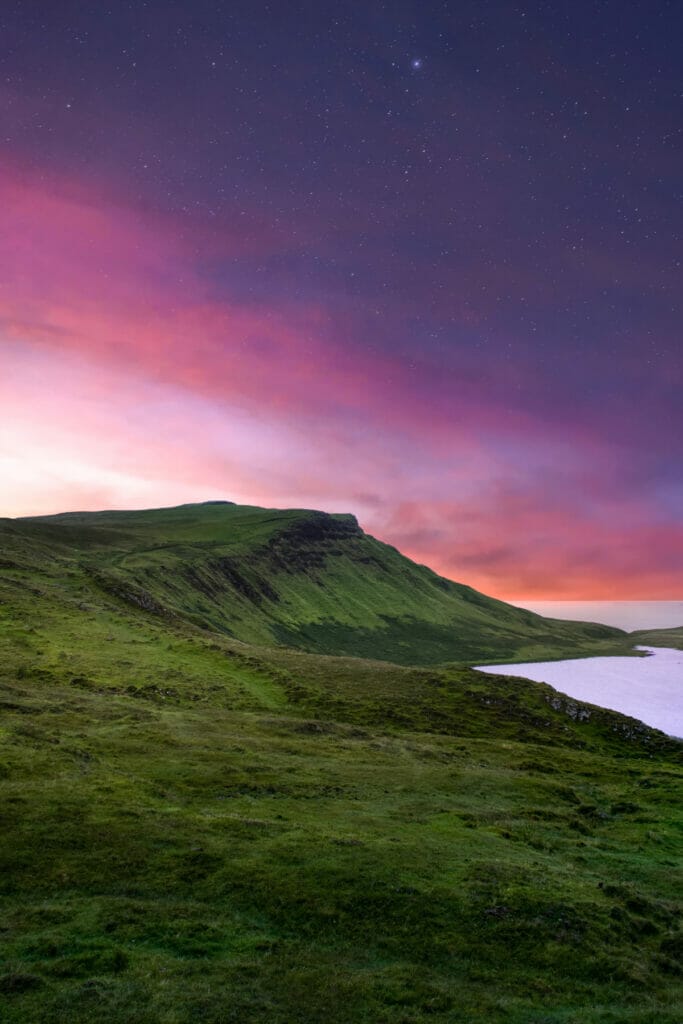
Scotland is the most permissive when it comes to wild camping, thanks to the Scottish Outdoor Access Code, which was established by the Land Reform (Scotland) Act 2003.
Basically, this code allows people to camp on most unenclosed land, provided they follow the code’s responsible access practices.
It’s one of the many reasons why Scotland is such an outdoor adventure hub.
Popular locations for wild camping in Scotland include the stunning Cairngorms National Park, Orkney, the Isle of Arran and the Isle of Skye, home to the challenging Cuillin Ridge Traverse, requiring an overnight bivouac on the mountain, where many mountaineers go to test themselves.
However, you should note that there are specific areas in Scotland, like Loch Lomond & The Trossachs National Park that have stricter guidelines.
It’s essential to check local bylaws beforehand and also look out for signage which will indicate whether camping is permitted or not.
Wild Camping in England
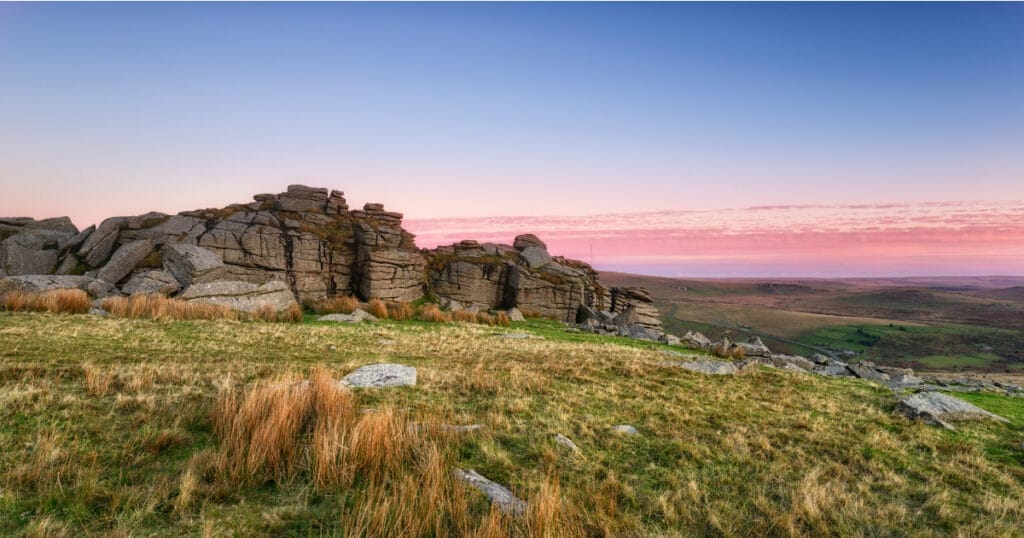
In England, wild camping is not broadly permitted without the landowner’s permission, with some exceptions.
That’s because most of the land here is privately owned, and camping on it without consent is technically trespassing.
In reality, enforcement is often relaxed, and in practice, discreet wild camping may be tolerated in upland and remote areas, especially in national parks.
Where I live near the North Yorkshire Moors in England, you’ll often see a lone tent or two discreetly pitched within the moorland.
If you don’t light fires or make a mess and leave no trace, then no one will disturb you, despite it technically not being allowed.
The Dartmoor National Park is unique in that it has specific areas where wild camping is explicitly allowed without prior permission, thanks to the Dartmoor Commons Act.
In fact, it’s the only place in England where wild camping is officially legal. Well, at least for now, as there are some legal battles going on in an attempt to ban it.
Here’s a map and more information about backpack camping in Dartmoor.
Wild Camping in Wales
In Wales, the legalities surrounding wild camping are similar to much of England, meaning that wild camping is not explicitly permitted without the landowner’s permission but it’s often acceptable in some national parks, if you’re careful.
The Brecon Beacons National Park has certain areas where wild camping is more accepted, but it’s always best to check with the National Park Authority or local landowners.
If you decide to risk it, pitch late and wake early and ensure you only stay a night.
In other national parks, such as Snowdonia and the Pembrokeshire Coast, wild camping is generally discouraged, and campers are advised to use designated campsites.
Wild Camping in Northern Ireland
Sadly in Northern Ireland, wild camping is not officially permitted without the landowner’s consent.
The land is predominantly privately owned too, and there are no specific laws or codes similar to Scotland’s that allow for wild camping.
Campers are advised to seek permission from landowners or just opt for established campgrounds instead.
Wild Camping Etiquette:
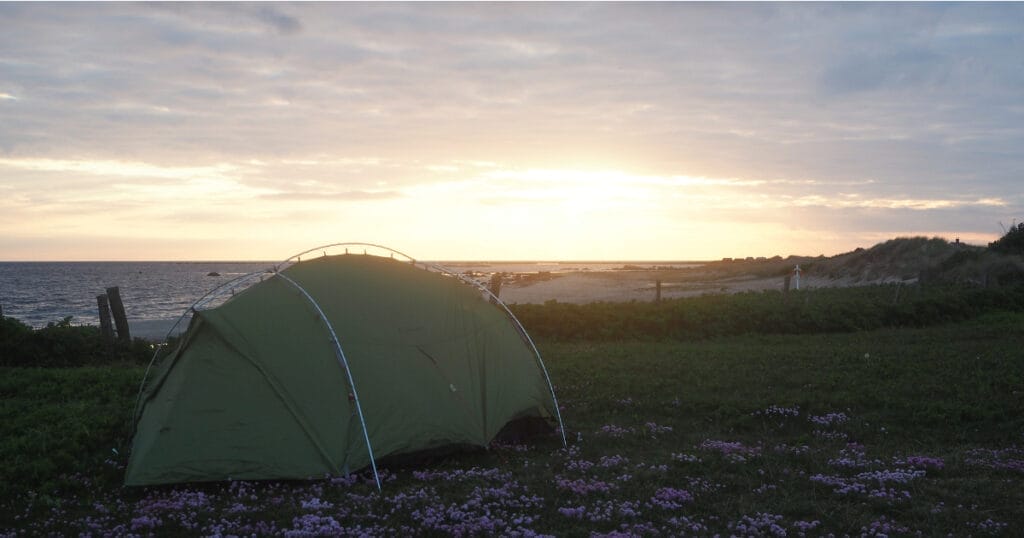
Wild camping etiquette in Britain is largely centered around respecting the natural environment, the wildlife, and other people who may be using the land.
There are a few essential things that come into play when choosing your camping spot in particular.
Here is some British wild camping tips and etiquette:
Vegetation and Wear & Tear
When choosing the best pitching spot, don’t trample vegetation or pitch over plants.
You want somewhere solid, grassy (or mossy) and flat that will bounce back quickly once you have left.
That being said, it’s best to not stay in one spot for more than two days in a row, so you can allow the site underneath to recover.
Whilst it’s good to seek somewhere that looks as though other people have pitched there, bear in mind continual use of the same location can lead to soil compaction, vegetation damage, and a visible impact on the landscape.
There’s a bit of a balance required between reusing an old spot and finding somewhere new, so just use your judgement about which option is best for the land where you are.
Water Source & Proximity
Whilst it’s good to be fairly close to water if you haven’t brought a supply for your whole trip, you should maintain a distance from water sources to avoid contamination, typically at least 200 ft/60 metres. You’ll also be further away from bugs, like mosquitoes.
For personal hygiene and washing, carry water 30-50 metres away from streams or lakes, and use biodegradable soap specifically made for outdoor use – and use it sparingly, unlike you may at home.
Always boil or purify water before drinking too, no matter how crystal clear and fresh it may look!
Consideration of Others
When scouting your spot, you should aim to keep away from, or out of sight of houses, farms or roads – even quiet country lanes.
Not only will that mean you’ll get left alone, you won’t disturb others.
Most people who wild camp pitch late and get up early (i.e. daybreak) so as not to disturb the land for long and to keep their presence as low-key as possible.
It’s a given, but don’t play music or get rowdy, as sound carries far especially in exposed areas like the moorlands and you can bother locals as well as anyone else trying to have a quiet night under the stars.
Leave No Trace
In addition to general etiquette there are of course the “Leave No Trace” principles, a basic but also fundamental set of guidelines to put in practice whilst wild camping.
They include but are not limited to:
- Planning Ahead: Research your chosen area and understand local rules.
- Burying your waste: Bury human waste (including used toilet paper) in a small hole 15-20 cm deep and at least 50 meters away from water bodies, trails, and camp areas.
- Minimizing Campfire Impact: Use a portable stove instead of lighting a fire to reduce damage and risk of wildfires. If this is not possible, try to use a spot someone else has used, lining the fire with rocks that you should return afterwards.
- Pack It In, Pack It Out: Carry all waste and rubbish out with you, leaving the site as you found it, or even better!
- Respecting Wildlife: Keep a safe distance from animals and do not disturb their habitats. Don’t pitch where it looks like there’s animal activity or destroy any trees or vegetation to do so.
From experience, there’s nothing more gross than a campsite or a public trail that’s scattered with toilet paper, funky smells, blackened old fire pits and litter.
Because there are so few places where you can wild camp legally in Britain, the community is typically really protective and over vigilant about keeping wild camp areas clean.
Why?
Because if people don’t look after the land, it could well put it all in jeopardy. It’s best you do the same!
See you out in the hills!
About the author: Tammy is editor of Adventure Brits, a community-driven publication celebrating the epic and everyday adventures to be had across the British Isles (and the people behind them!). She’s also been writing about solo international travel for over 7 years on her personal blog, Travelling Tam.


